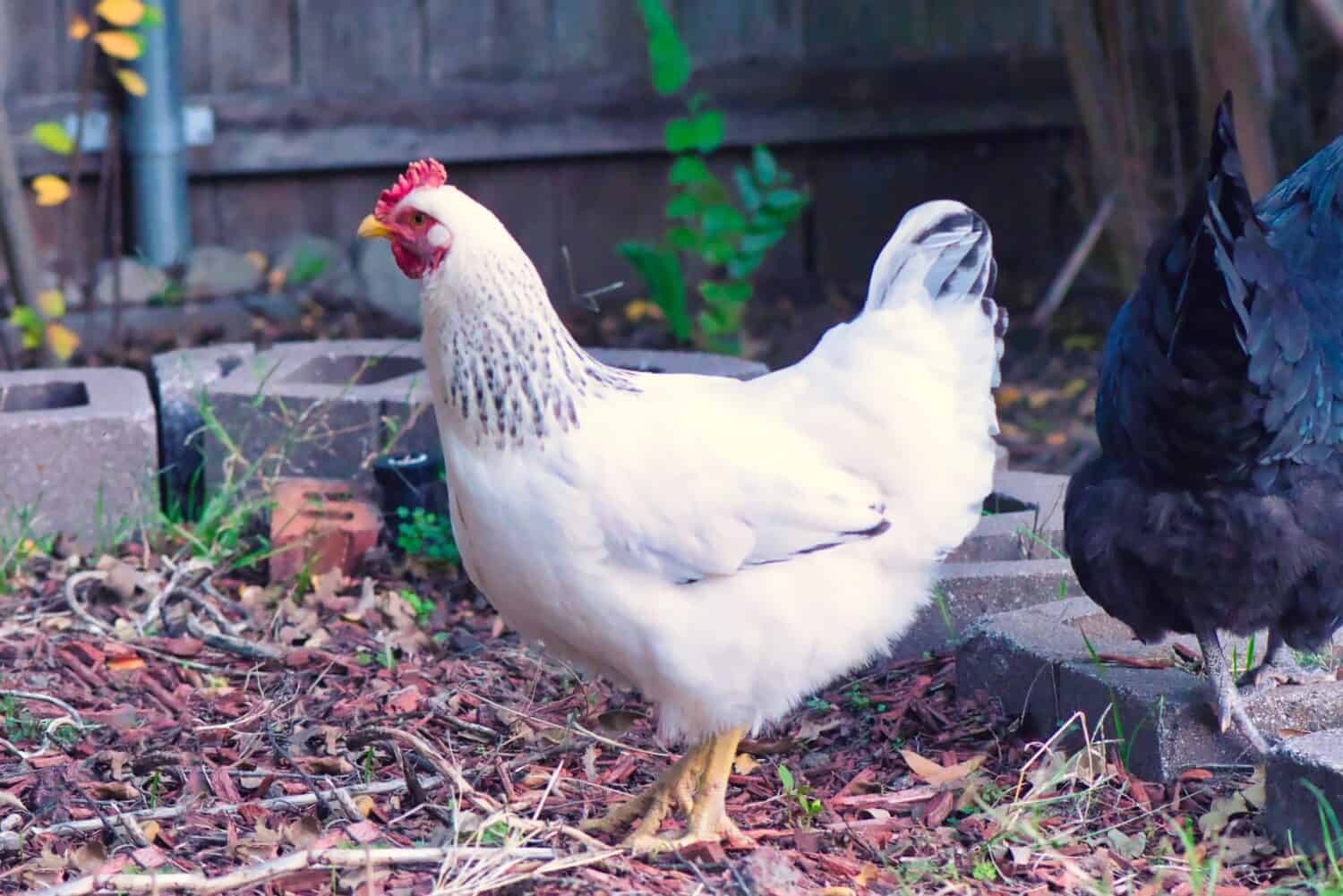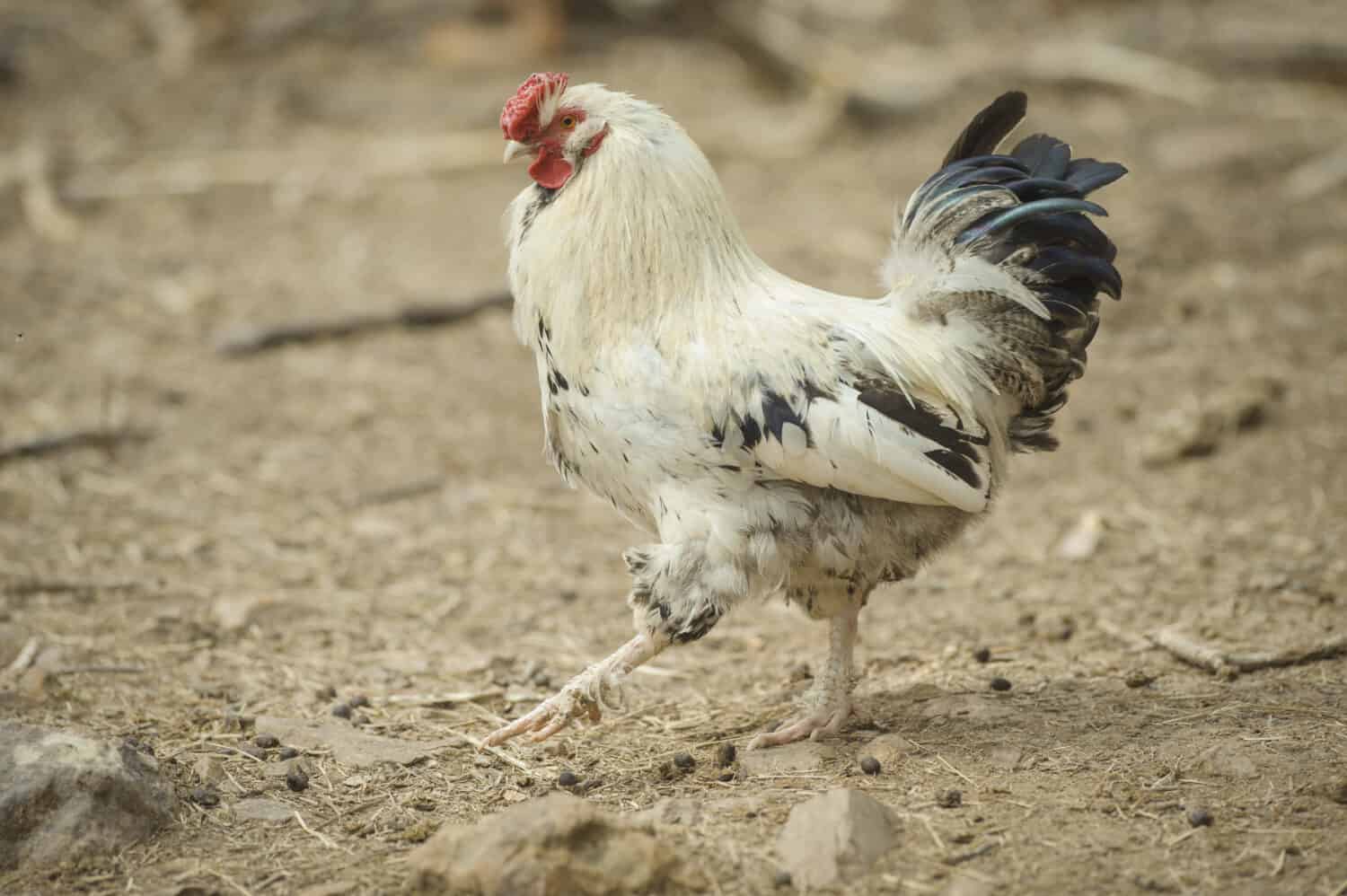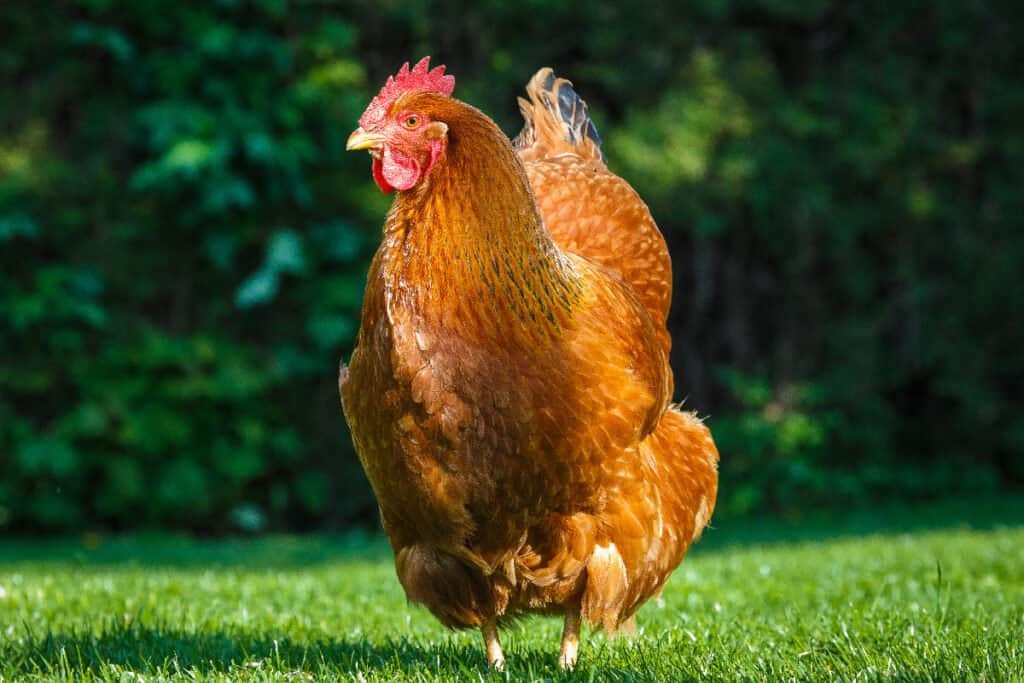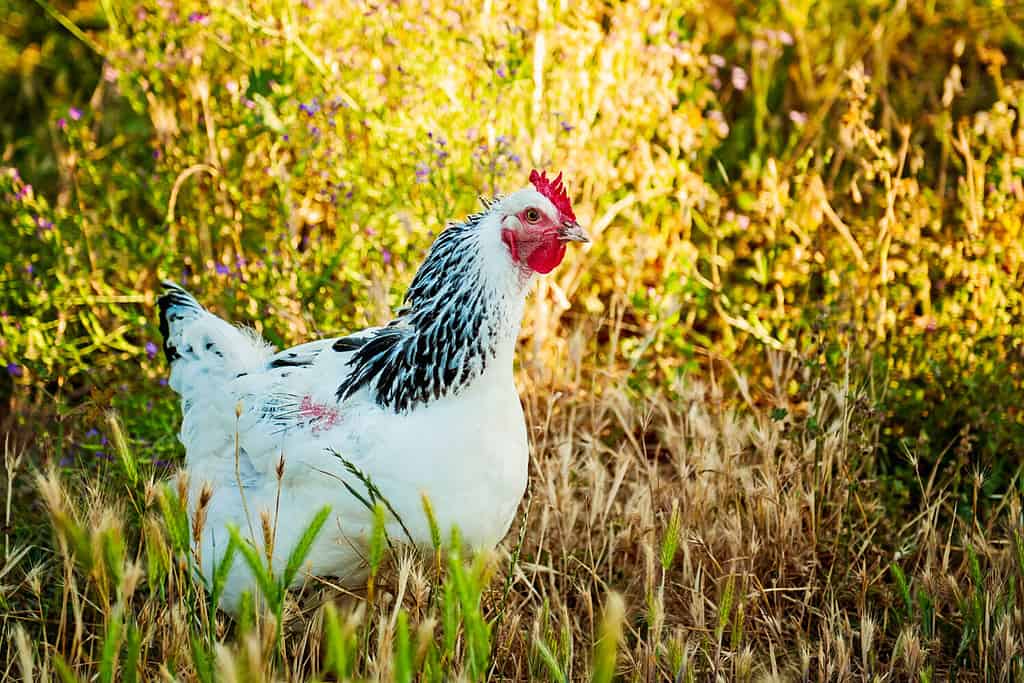Today the Delaware chicken is rare. But when it was first created in the 1940s, everybody wanted it. It was a fantastic broiler chicken known for high egg production. While Delaware chickens remained popular for 15 to 20 years, they were superseded by the Cornish cross, a fast-growing chicken still popular today. However, many younger farmers have started to raise Delaware chickens and are pleasantly surprised. They are relatively low-maintenance and make excellent dual-purpose chickens.
History
Originally named the Indian River chicken, the Delaware was bred in the 1940s by a man named George Ellis, who wanted to create a chicken that could be used for broiling, but also a good layer. So, he decided to crossbreed New Hampshire hens with Barred Plymouth Rock roosters. This resulted in white offspring with black barring on their tails, hackles, and primary and secondary feathers. George Ellis continued to experiment until he was able to refine the breed and finally created the Delaware chicken.
These chickens maintained their popularity for around 20 years, notorious for being excellent broiler chickens and producing offspring with predominately white feathering. Having white feathering is advantageous because white feathers don’t leave dark spots on the chicken’s skin, making the carcass more appealing to shoppers. However, in the 1950s, Delawares were replaced by solid white Cornish/Plymouth Rock mixes that still dominate the broiler industry.
Unfortunately, Delaware chickens were specifically bred for broiling. Therefore, not many homesteads or small farms knew of their existence, so their demise was quick. But they are slowly making a comeback as many farmers have discovered they are actually dual-purpose chickens. In addition, it is easy to care for them as they only require water, food, and shelter.

Originally named the Indian River chicken, the Delaware was bred in the 1940s by a man named George Ellis, who wanted to create a chicken that could be used for broiling, but also a good layer.
Image: Ashley Thomas Photography, Shutterstock
©Ashley Thomas Photography/Shutterstock.com
Appearance
Delawares are medium-sized chickens known for their fast feathering and rapid growth. They have a deep and broad body, giving them a sturdy appearance. Their single combs are relatively large, with five points, and they have medium-sized heads and necks. They also have long keels extending to the front of the breasts and the back of the legs. Delawares have red wattles, combs, ear lobes, a reddish horn or yellow beak, and reddish-bay eyes. Males can reach 8 pounds when fully grown, while females grow to 6 pounds. These chickens look very similar to Columbian Wyandottes

Delawares are medium-sized chickens known for their fast feathering and rapid growth. They have a deep and broad body, giving them a sturdy appearance.
Image: Gunnar Rathbun, Shutterstock
©Gunnar Rathbun/Shutterstock.com
Behavior
Farmers like these chickens because they are low-maintenance. In addition, Delaware chickens are curious, calm, and friendly. They have gentle natures and are great with kids. Furthermore, they may stand out due to their white coloring, but they are predator-savvy. These chickens like to chatter and become quite used to people, often following them around. However, they are not what one would consider a cuddly breed. Unfortunately, they can be quite loud, so they are not ideal if you have neighbors close by. Delawares are not bullies, but they are assertive. These chickens prefer being outdoors, where they can explore and be free, so while they can be confined, they thrive as free-roaming chickens. Lastly, they only need a four-foot fence as they do not fly.
Egg-Laying
As mentioned above, the Delaware chicken produces a lot of eggs and is notorious for its meat. Therefore it is considered a dual-purpose chicken. They typically produce light brown large to jumbo-sized eggs. However, some hens also lay dark brown eggs. If cared for properly, these chickens can lay around four eggs per week, producing approximately 200 eggs annually. But the hens rarely brood, so invest in a good incubator if you plan on hatching the eggs.
Delaware hens begin to lay eggs when they are around 6 months old. However, as they grow older, the amount of eggs they produce declines by 10% per year. But, as these chickens can live up to 6 or 7, they can produce a large amount of eggs in their lifetime.
Unfortunately, several factors can influence egg production. For example, they must receive proper nutrition. They must receive high-quality feed containing the necessary nutrients, ensuring they lay healthy eggs. It also lessens the chances of the hens eating their eggs. Their feed must contain calcium. This will ensure the eggs have strong shells, making it harder for the hens to break and eat them.
Sex Linkage
While the Barred Rock and New Hampshire breeds create the Delaware chicken, Delaware’s can reproduce with other breeds, resulting in sex-linked chicks. For example, if a Delaware rooster breeds with either the Rhode Island Red or New Hampshire, hen, it results in a Delaware. However, if the rooster is a Rhode Island Red or New Hampshire and breeds with a Delaware, it results in red sex links chicks.

If a Delaware rooster breeds with either the Rhode Island Red or New Hampshire, hen, it results in a Delaware.
©Jesper Frehr/Shutterstock.com
Delaware Chicken Health
While Delaware chickens are relatively healthy and strong, they are susceptible to dirty surroundings, so keep their environment clean! Unsanitary environments breed internal and external parasites. Additionally, owners must inspect their chickens regularly for ticks and mites, especially in the hidden areas. You can treat the area with appropriate sprays or dusts if any are found. Periodic veterinary tests can also prevent any potential health issues.
These chickens grow incredibly fast, so food and water should always be available to them. However, never overfeed the chicks, as it can cause diarrhea, leading to dehydration and, eventually, death. Chicks must be fed in tiny quantities several times a day. Furthermore, owners must provide their chickens with food that strengthens their eggshells, like shell grit.
Chicken Coop
While these chickens love to be outdoors and free-roaming, they still need a chicken coop. Delaware chickens are very active, so the coop must be devoid of dangerous materials. They spend their time foraging and will definitely fish out any potential danger and eat it. In addition, they require a lot of space. For example, you need at least ten square feet for every chicken. If they are cramped into a small space, it will lead to fighting and cannibalism. Therefore, they need room to forage calmly.
Care
As mentioned above, caring for Delaware chickens is relatively easy. All they require is food, water, space, and shelter. Avoid chemical solutions, use natural foods, and allow them free-range. Furthermore, make your own natural remedies to clean their coop and treat minor infections.
Delaware Chicken Pros and Cons
To make an informed decision, here are the pros and cons of the Delaware Chicken:
| Pros | Cons |
|---|---|
| Good egg layers | Noisy |
| Large to jumbo-sized eggs | Not broody |
| Good meat | White color makes them stick out to predators |
| Grow fast | Need a lot of space |
Breed Standards of the Delaware Chicken
These chickens officially gained admittance into the American Poultry Association in 1952. There is only one variation of the Delaware, which has white and black barring on its tail, hackles, and sometimes body and wings. Due to their popularity being short-lived, these chickens never had the chance to make their mark in the United States. Therefore, there are no other breeding standards for Delawares.

Due to their popularity being short-lived, these chickens never had the chance to make their mark in the United States. Therefore, there are no other breeding standards for Delawares.
©Horse Crazy/Shutterstock.com
The photo featured at the top of this post is © Horse Crazy/Shutterstock.com
Thank you for reading! Have some feedback for us? Contact the AZ Animals editorial team.






